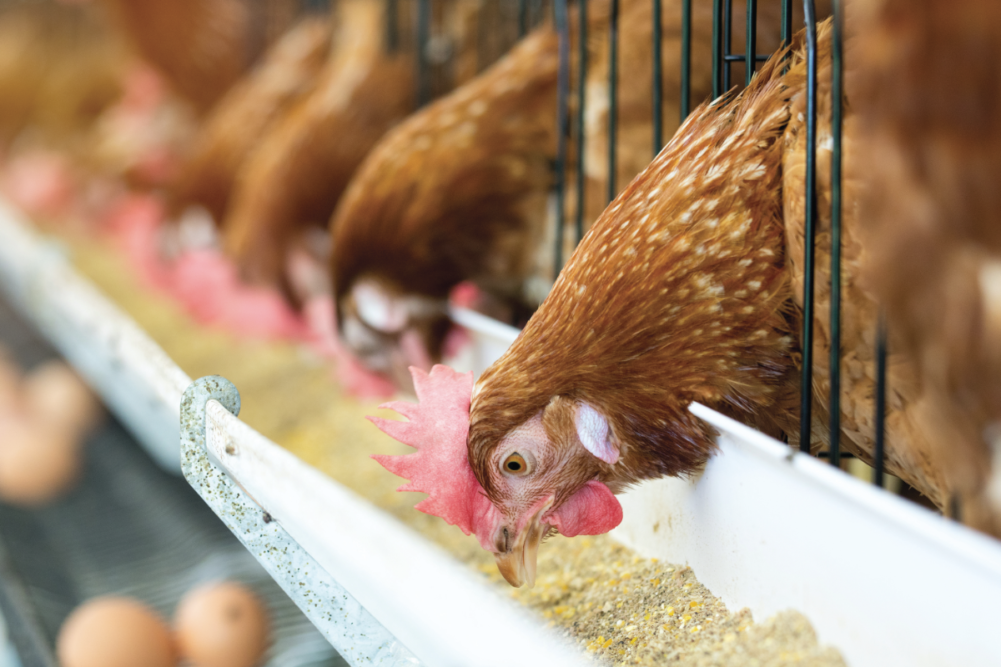Led by growth in China and Latin America, global feed production increased by 1% in 2020, to 1.187 billion tonnes, according to the annual Alltech Global Feed Survey released on Jan. 26.
It reversed last year’s decline of 1%, the only time in the 10 years of the survey in which global production has decreased.
China saw 5% growth in feed output and reclaimed its position as the top feed-producing country in 2020 at 240 million tonnes, according to the survey.
“In the face of challenges of disease and lockdown, China’s rebound has been faster than expected,” Alltech said.
Rounding out the top 10 feed-producing countries, including tonnage and growth percentage, are:
- the United States (215.9 million tonnes, +1%)
- Brazil (77.6 million tonnes, +10%)
- India (39.3 million tonnes, -5%)
- Mexico (37.9 million tonnes, +4%)
- Spain (34.8 million tonnes, 0%)
- Russia (31.3 million tonnes, +3%)
- Japan (25.2 million tonnes, 0%)
- Germany (24.9 million tonnes, 0%)
- Argentina (22.5 million tonnes, +7%).
Altogether, these countries account for 63% of the world’s feed production and can be viewed as an indicator of the overall trends in agriculture, Alltech said.
Latin America output surges
By region, feed production increased 4% in Latin America (176.5 million tonnes), 2% in Asia-Pacific (443.9 million tonnes) and 1% in North America (237.2 million tonnes). It decreased 2% in Africa (43 million tonnes), the Middle East (24.8 million tonnes) and Oceania (10.4 million tonnes) and fell 1% in Europe (261.9 million tonnes).
Leading the way in Latin America’s surge in production was Brazil, the only country with double-digit growth at 10%, and Argentina, which increased its tonnage by nearly 1.6 million tonnes, or 7%.
Latin America saw a rise in feed output for broilers, swine, dairy cattle and aquaculture. The survey noted that Latin America’s 8% increase in aquaculture feed production was led primarily by Brazil and Ecuador. It also posted the highest gains in dairy feed production (7%) and swine feed production (7%) among the world’s seven regions.
African swine fever impact
The global data, collected from more than 140 countries and more than 28,000 feed mills, indicates feed production by species as follows: broilers, 28%; pigs, 24%; layers, 14%; dairy, 11%; beef, 10%; other species, 7%; aquaculture, 4%; and pets, 2%.
The predominant growth came from the broiler, pig, aquaculture and pet feed sectors.
Broiler feed output rose 1% as the growth was led by the Asia-Pacific region, especially in China but also Bangladesh and Vietnam, as well as Latin America, including Brazil, Venezuela and Chile.
The survey said some declines in broiler feed demand were seen initially as the result of the closing of restaurants and hotels in first several months of the pandemic, although this was later offset by increased at-home cooking, “particularly as this meat is considered low-cost and easy to cook.”
Disease continues to challenge swine producers, and there is concern in Oceania about the spread of African swine fever as it continues to spread throughout the Asia-Pacific region.
“Despite that challenge in some areas of Asia-Pacific, China has bounced back significantly from African swine fever,” Alltech said. “Asia-Pacific remains flat in growth because many other countries, such as the Philippines and Thailand, continue to struggle with the disease.”
Pig feed production increased 1% globally.
Alltech noted that as China returns to self-sufficiency, many other countries’ pork exports will decline in the coming years.
As for the pet industry, which saw global feed output grow by 8%, Alltech said it was one of the few industries that reaped benefits from COVID-19 and the related lockdowns, with pet adoption rates soaring.
“As a result, the pet food industry experienced its largest growth in the past three years,” Alltech said. “Premium pet foods continue to see growth, although economic conditions also allowed for an increase in the purchase of lower-cost feeds as well.”
Global output of aquaculture feed grew 3% as the industry continued to see consolidation of production.
“While China is primary leader in Asia-Pacific, the main growth in this region was seen in Vietnam, Bangladesh and the Philippines, accounting for nearly 1 million tonnes more of aqufeed,” Alltech said.
Feed production for layers remained flat, partly due to disease, such as avian influenza, affecting Europe, especially in the latter part of the year.
The only protein segment to see a decrease in global feed production was beef cattle, which decreased 1%. Alltech foresees a continuation of this trend.
“Consumers confronted with poor economic conditions shifted toward cheaper proteins in 2020, and this trend is expected to continue,” Alltech said.






